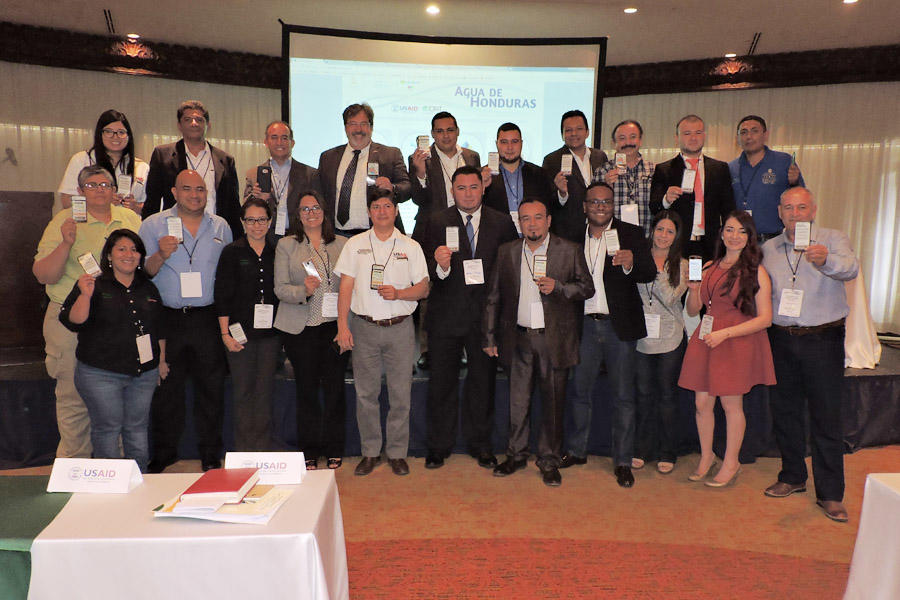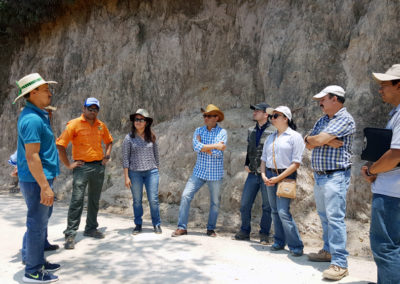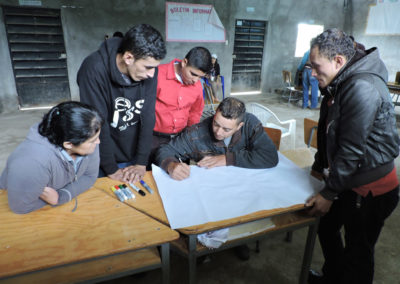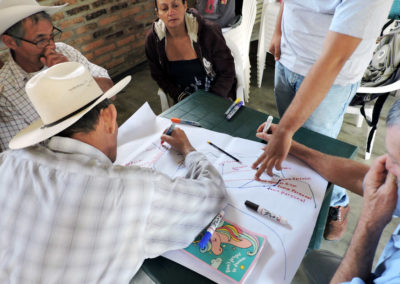Inter-institutional team tackles Honduras’s water crisis

More than 300 actors, including technicians and decision makers from six departments in western Honduras (Copán, Intibucá, Lempira, La Paz, Ocotepeque, and Santa Bárbara), have benefited from the Honduras Water platform [Agua de Honduras], co-developed by CIAT’s Agroecosystems and Sustainable Landscapes (ASL) and Decision and Policy Analysis (DAPA) research areas.
A first of its kind, the platform, developed within the framework of an inter-institutional cooperation agreement between CIAT and the Government of Honduras through MiAmbiente+, funded by the United States Agency for International Development (USAID), provides communities with information resulting from hydrological analyses and combines it with data from current and future climate scenarios, vegetative cover, and water demand to facilitate decision making on water management in micro-basins, sub-basins, and basins.
For the past decades, access to water resources has been one of the greatest challenges for economic and social development in some Central American countries, such as Honduras. For this reason, actors responsible for decision making, including technicians, water councils, municipalities, NGOs, and national authorities, have only been able to rely on qualitative data, which has allowed them to implement actions in specific areas of some basins.
This may be efficient in the implementation of some projects, but overall it is not enough for offering the communities an integrated water resource management along with a positive impact on river water availability. This situation prompted a team of CIAT researchers to develop a digital technology called “Honduras Water platform,” aimed to enable technicians and decision makers from the local to national level to access water-related information, enter local data, obtain statistics, simulate scenarios, find new water resources, and most importantly, have all of this information readily available.
This platform can be used for water resource planning and management, as it informs investments by municipal, governmental, and international cooperation bodies in relation to water conservation and access to the resource by smallholders.
Jefferson ValenciaVíctor Saravia, Director of the Ecological Association of San Marcos, Ocotepeque (AESMO, its Spanish acronym), added that it is important to support this initiative since it allows to know the availability of the water resource and its uses, how many people need this resource for consumption, and how its supply can be secured in the source to ensure availability at critical times. This technology also makes possible to find new sources of water for small-scale irrigation systems for farming, and it can be accessed from any mobile device or desktop computer through a free government website.
The platform has certainly become instrumental in addressing the implementation of some national laws such as the General Water Law, Nation Plan, Country Vision, and the Water, Forest and Soil Master Plan. Accordingly, the Secretariat of Natural Resources and Environment (MiAmbiente+) has adopted this platform as one of its main water resource management and governance systems in the country. “The greatest impact of this technology is a country well-informed to use and manage wisely its water resources by effectively empowering local and national stakeholders to make the best use of the platform,” said Valencia.
In view of the successful results obtained thus far, Honduras Water will continue in the long term through a new phase formally requested by the Government of Honduras to USAID. The new phase will focus on collecting information from other micro-basins in western Honduras with the aim of enabling the implementation of national laws and policies in planning and conservation of natural resources key for a nation’s development, such as water, forests, and soil.
***
This work contributes to the CGIAR Research Program on Water, Land and Ecosystems (WLE).




